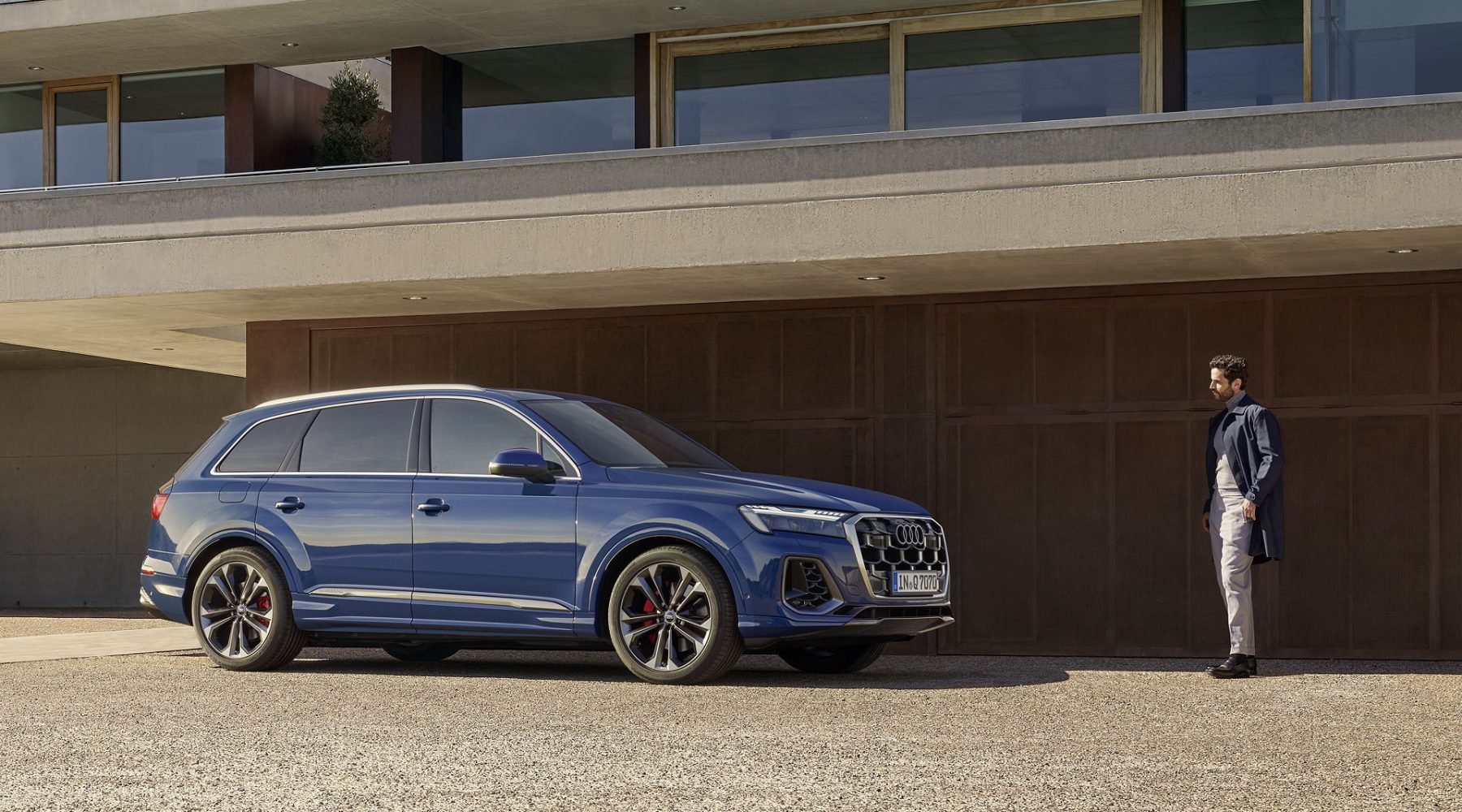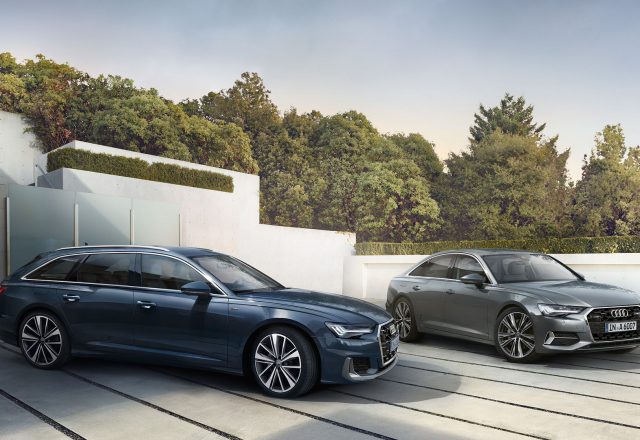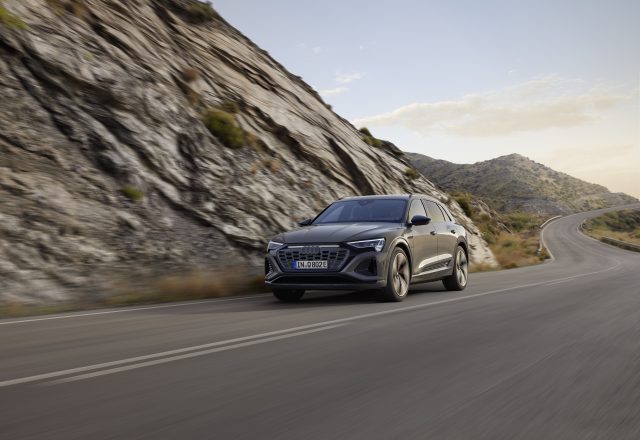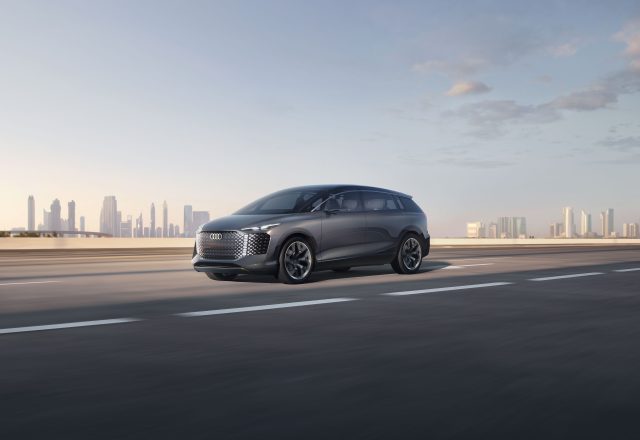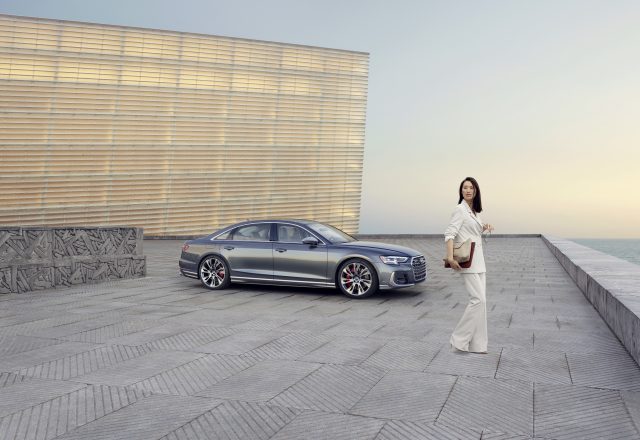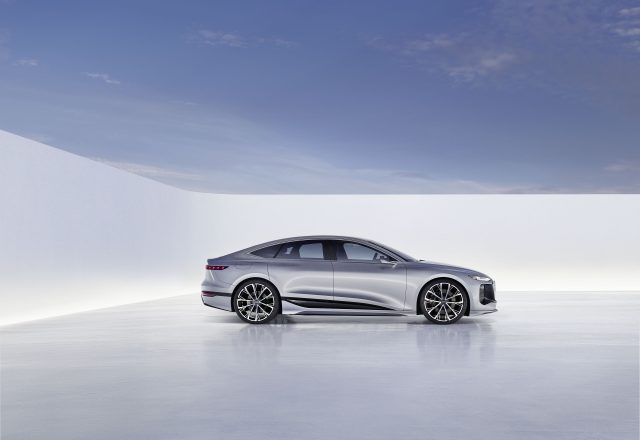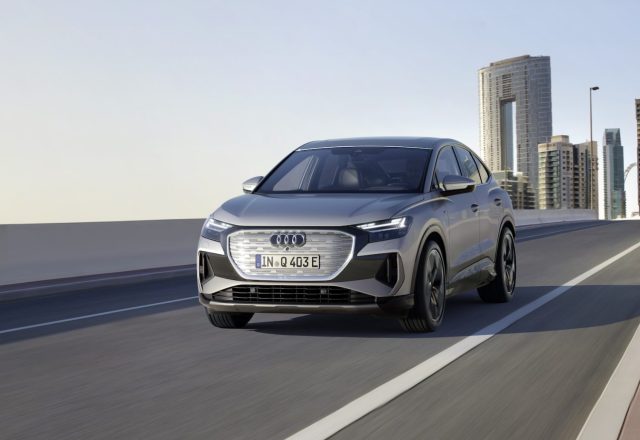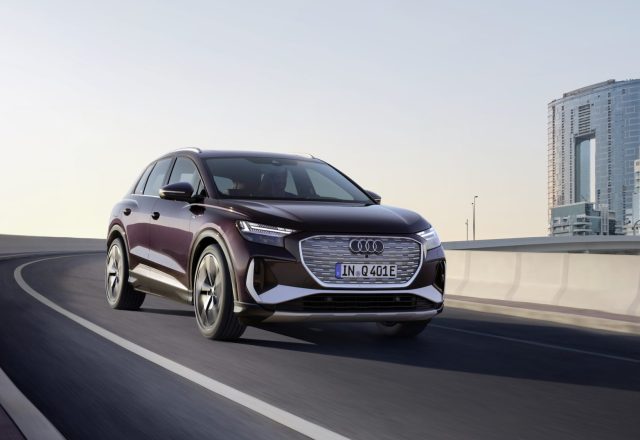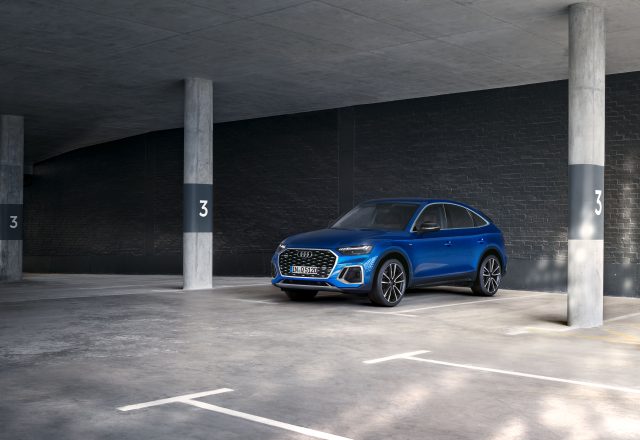That’s right – it’s the Audi Q7. The reasons for this alliance are obvious: The large SUV made by Audi has been one of the most popular members of its vehicle class since 2005. Ever since more and more companies started to make room in their fleets for these muscular urban cowboys, the Q7 has become a permanent member in the business segment: Here, too, the reasons for this shift are obvious. First, the vehicle’s distinctive design – it’s an Audi after all – that makes a stunning impression during customer meetings. Second, its flexible interior concept that is ideal for private usage. User-choosers with families know exactly how important such features are.
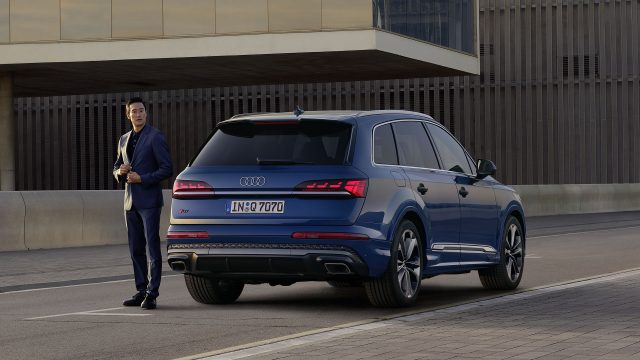
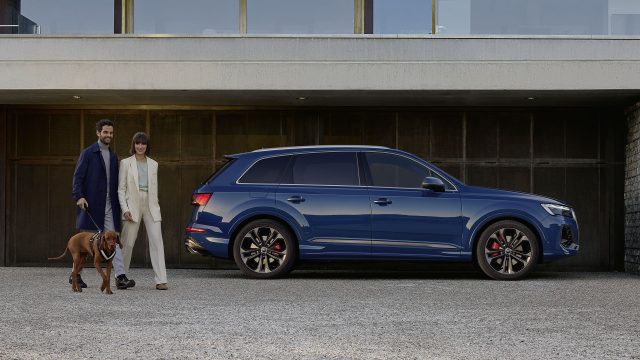
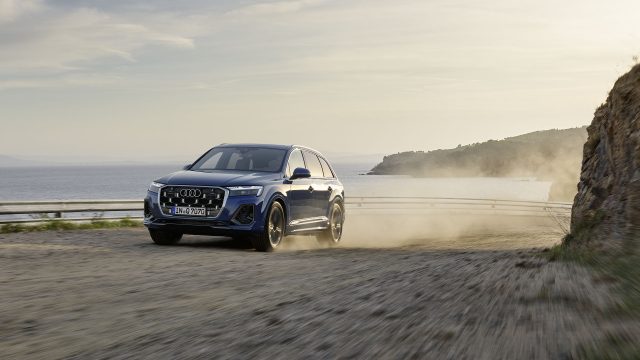
The Audi Q7 officially went on sale for the first time nearly 20 years ago, in 2005, to be exact. Today, the second generation of the robust and elegant SUV is rolling down the road after having undergone its second upgrade since 2019. And it is a sight to see: The distinctive styling of the Q7 was sharpened once again. Thanks to its linear surfaces and its exceptionally spacious interior, the Q7 provides flexibility for every situation you face in life.
Flexible and roomy: the interior concept
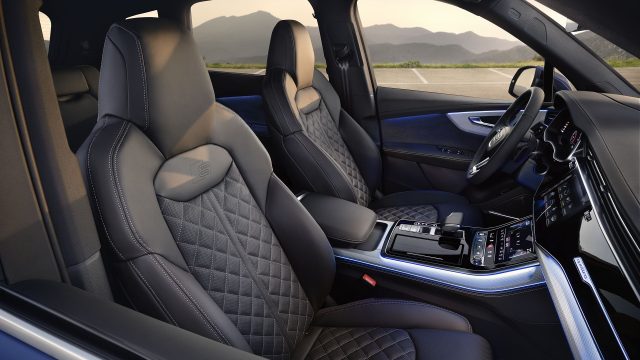
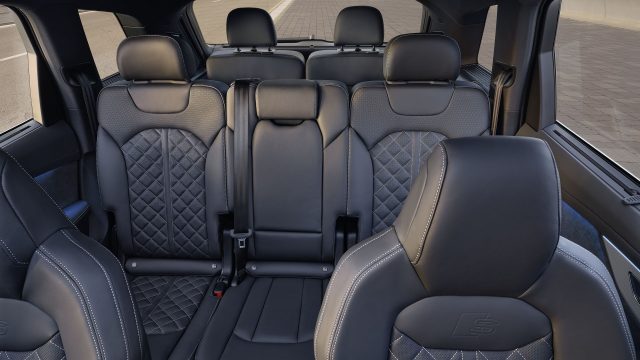
No matter whether you are talking about five or seven seats versions – the Audi Q7 and SQ7 TFSI (fuel consumption combined in l/100 km: 12.7–12.0; CO₂ emissions combined in g/km: 290–272; CO₂ class: G)¹⁾ marry uncommon prestige with practical everyday features. The models create an exceptional feeling of airiness in the vehicle, the product of their interior length and the headroom and elbow room they offer both in the front and rear. Depending on the position of the rear backrests, the luggage compartment of the five-seat version offers between 867 litres and 1,993 litres of volume – the latter provided when the backrests are down. The tailgate is electrically powered as standard and can be optionally triggered by a foot gesture. Audi also offers the optional rear seat plus. This feature allows the length and back angle of all three seats to be individually adjusted, ensures enough space for three child seats at all times and boasts a third row of two electrically folding seats.
Efficient and powerful: the drive systems
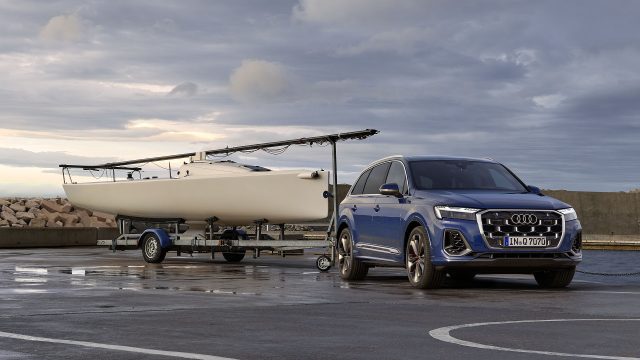
The range opens with the 45 TDI quattro (fuel consumption combined in l/100 km: 8.4–7.8; CO₂ emissions combined in g/km: 220–204; CO₂ class: G)¹⁾, a three-litre diesel engine that produces 170 kW (231 HP) of output and delivers an impressive 500 Nm of torque. The plateau extends from 1,500 to 3,000 rpms. From a standing start, the Audi Q7 45 TDI reaches 100 km/h in 7.1 seconds. Its top speed is 226 km/h. This engine is followed by the 50 TDI quattro (fuel consumption combined in l/100 km: 8.4–7.8; CO₂ emissions combined in g/km: 220–204; CO₂ class: G)¹⁾. The Q7 50 TDI quattro produces 210 kW (286 HP) of output and delivers 600 Nm of torque. From a standing start, the large SUV hits 100 km/h in 6.1 seconds and can reach a top speed of 241 km/h. The Audi Q7 55 TFSI (fuel consumption combined in l/100 km: 11.0–10.1; CO₂ emissions combined in g/km: 251–229; CO₂ class: G)¹⁾ features a six-cylinder combustion engine with three litres of displacement and direct injection. The engine produces 250 kW (340 PS) of output. It generates a broad rev range that extends from 1,370 to 4,500 rpms and delivers maximum torque of 500 Nm. Propelled by its turbocharged combustion engine, the Audi Q7 accelerates from zero to 100 km/h in 5.6 seconds. Its top speed is electronically governed at 250 km/h.
Stylish and individual: new decorative finishes, colours, wheels
With the latest product upgrade, Audi has once again refined the equipment programme for the Q7. The seams on the seat trim for the base model now come as standard in a contrasting grey colour. Customers can also choose from nine decorative inlays. New additions to the equipment lineup include: natural elm burl silver for the base model, matte brushed aluminium with linear embossing in silver for the Q7 with the S line sport package as well as for the SQ7 TFSI (fuel consumption combined in l/100 km: 12.7–12.0; CO2 emissions combined in g/km: 290–272; CO₂ class: G)1).
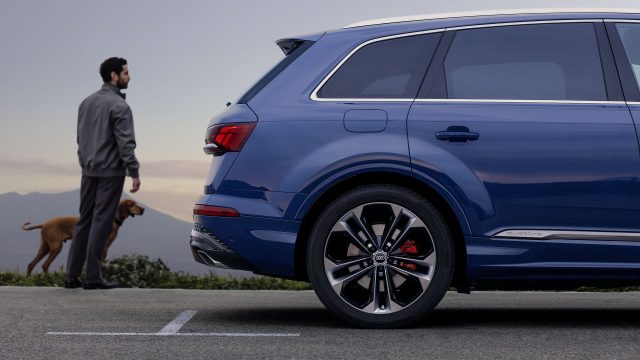
Customers can also choose from three new paint colours to further customise their Q7. For a particularly sporty appearance, the range of metallic finishes now includes Sakhir Gold, Ascari Blue and Chili Red. But new paint colours are far from the only thing that customers can look forward to: The wheel range offers a choice of five new 20” to 22” wheel designs. Black Metallic, Grey Silk Matte with Glossy Black inlays or diamond-cut2) Black Metallic are available for 21-inch wheels and larger.
Audi is also expanding its range of apps as part of the model update. For the first time, passengers can use popular apps from third-party providers (such as Spotify or Amazon music). Regular software updates and a constantly growing range of products enable even greater individualisation of the infotainment system. The store with a market-specific app portfolio expands the third-generation modular infotainment toolkit (MIB 3).3)
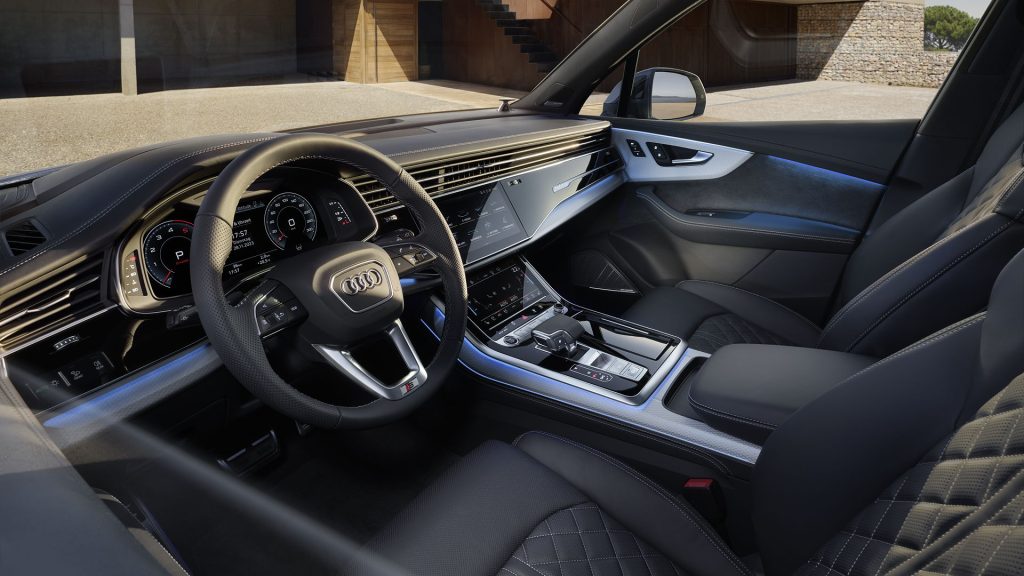
In terms of the driver assistant system, the surroundings display has undergone further enhancement in particular. The Audi virtual cockpit displays a range of information including a lane change warning, other road users (trucks, cars and motorcycles), distance warning, intersection assist and traffic light information online in full HD quality.4) In addition to the store for apps and the new surroundings display, the standard equipment offered by the Q7 has been upgraded – standard features for the V6 combustion engines now include 19-inch alloy wheels, the high-gloss package with aluminium roof rails, a rearview camera with parking assist plus and high beam assist. Other features include the comfort centre armrest, smartphone interface with integrated store for apps and Audi phone box.
All information applies to the German market. The vehicle images show optional equipment.
1)Information on fuel/power consumption and CO₂ emissions given in ranges depends on the equipment selected for the vehicle. The specified fuel/power consumption and emissions figures were determined according to the measurement procedures prescribed by law. On 1 January 2022, the WLTP test cycle replaced the NEDC test cycle fully. This means that NEDC values will not be provided for new type-approved vehicles after this date. The information does not refer to an individual vehicle and is not an integral part of the offer. It is provided solely for the purpose of comparison between the different vehicle types. Additional equipment and accessories (e.g. add-on parts, different tyre formats etc.) may change the relevant vehicle parameters, such as weight, rolling resistance and aerodynamics, and, in conjunction with weather and traffic conditions and individual driving style, may affect fuel consumption, electrical power consumption, CO₂ emissions and the performance figures for the vehicle. Because it involves more realistic testing conditions, the fuel consumption and CO₂ emission values calculated in accordance with the WLTP are in many cases higher than those calculated in accordance with the NEDC. As a result, there may be corresponding changes to vehicle taxation starting on 1 September 2018. Further information about the differences between WLTP and NEDC can be found at www.audi.de/wltp.
Further information on official fuel consumption figures and the official, specific CO₂ emissions of new passenger cars can be found in the “Guide on the fuel economy, CO₂ emissions and power consumption of new passenger car models”, which is available free of charge at all sales dealerships and from DAT Deutsche Automobil Treuhand GmbH, Hellmuth-Hirth-Str. 1, 73760 Ostfildern, Germany, or at www.dat.de/co2.
²⁾Bright turned, bright milled, polished or partially polished aluminum wheels must not be used in winter road conditions. The rim surface does not have sufficient corrosion protection due to the manufacturing process and can be permanently damaged by road salt or similar.
³⁾The Audi Application Store gives you access to a large selection of apps that can be loaded directly into the vehicle and used via the MMI touch. A myAudi account and an active data connection are required to use the Audi Application Store. You can obtain the required data volume from our mobile phone partner cubic telecom on the basis of a separate contract. Here you can activate a 25 GB data package free of charge for a one-year period of use. Additional data volume can be added at any time for a fee.
⁴⁾Please note: The systems only work within system limits and provide support while driving. Responsibility and the necessary attention in road traffic remain with the driver.
Status: 12.03.2024
© Audi
